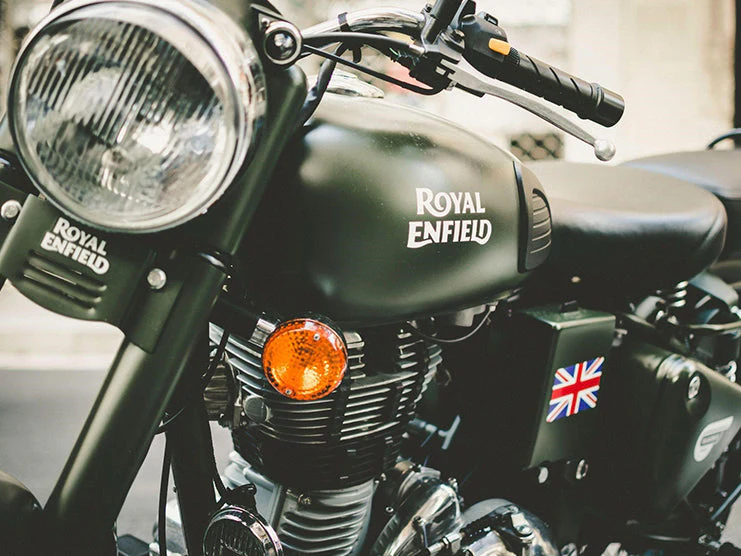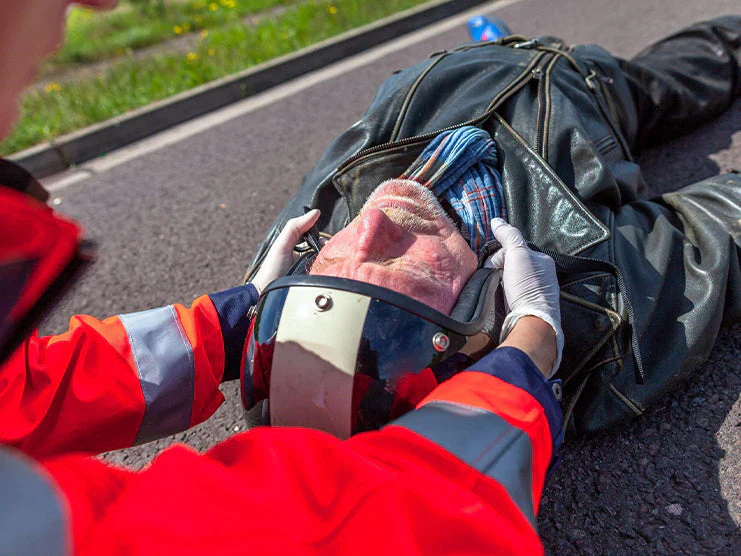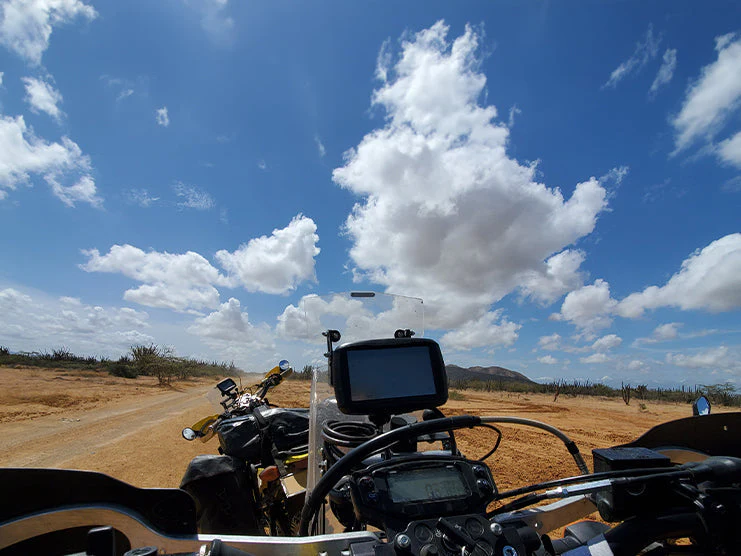Table of Content
“Success isn't always about greatness. It's about consistency.”
Nowadays, the motorcycle industry has become unpredictable and complex. Several motorcycle manufacturers have established themselves to a level where it has become difficult for small-scale and newer motorcycle brands to survive. Several factors have played a role in why most motorcycle companies shut down shortly after launch. One of the most prominent factors is innovation, keeping up with the latest technological advancements and incorporating them into motorcycles. However, Royal Enfield has tried to move at its own pace based on the resources available. From its founding in 1851, Royal Enfield has undergone numerous trials, even bankruptcy, but continues to exist due to sheer determination and perseverance. Read this article to learn about the remarkable history of Royal Enfield motorcycles.
1. The Remarkable History of Royal Enfield Motorcycles
1851
1.1 Starting from Needles Production
Starting back in 1851, Royal Enfield did not yet go by that name and primarily produced sewing needles. This company was established by George Townsend in Redditch, Worcestershire, U.K.

1882
1.2 Producing Cycles
In 1882, the company started producing cycle parts, including forks and saddles, for cycle manufacturing companies. At the time, the company was being managed by the founder’s son, George Townsend Jr.
1886
The company grew in size and started producing bicycles in 1886.
1891
In 1891, the company suffered huge financial losses and eventually collapsed. To overcome this situation, the company decided to appoint two new faces to run the business.
| Name | Company | Designation |
|---|---|---|
| Albert Eadie | Birmingham's Perry & Co. Ltd. | Sales Manager |
| Robert Walker Smith | D. Rudge & Co. | Engineer |
1892
1.3 Becoming Eadie Manufacturing Company
While the company struggled to survive, it was renamed Eadie Manufacturing Company Ltd. Expanding under Eadie’s leadership, the company started working for the government-owned Royal Small Arms Factory in Enfield, Middlesex. The company decided to adopt the brand name Royal Enfield, with the bicycles being produced being called Royal Enfields.
1896
Due to the heavy workload, the company decided to include a subsidiary company, The New Enfield Cycle Company Limited.
1897
As the Enfield progressed, it started handling all the cycle assembly tasks and took over.
1898
1.4 Introducing Quadricycle
In 1898, the first quadricycle was introduced. It was built by combining two bicycles with a single steering stem and a solo seat. The quadricycle had four wheels and was fitted with a motor capable of producing a horsepower of 1.5 hp, making it Enfield’s first moto vehicle.

Also Read: WORLD MOTORCYCLE DAY: ALL YOU NEED TO KNOW
1901
1.5 Producing First Motorcycle
After continuous experimentation by the Enfield Cycle Company in production and design, it successfully manufactured its first motorcycle.

1902
The company also started producing cars.
1906
In 1926, Enfield again decided to separate the production and assembly of its motor vehicles at a new production plant and subsidiary known as the Enfield Autocar Company Ltd., located in Hunt End, Redditch.
1907
Within two years, the company was unable to make up for financial losses, and the investors were forced to sell shares to Birmingham Small Arms Company (BSA). Luckily, BSA agreed to appoint Eadie and Robert Walker Smith as the directors of the Enfield company. The company continued to produce military equipment, including cars, cycle parts, assembled cycles, and rifles.
1926
1.6 The Fire Incident
In 1926, the company suffered another major setback after the Redditch factory caught fire. However, the company managed to survive thanks to the in-house emergency department which reacted quickly to save the assets.

1932
1.7 The First Bullet
In 1921, the company manufactured the classic Royal Enfield Bullet powered by an inclined sloper engine with twin-ported cylinder heads and high-compression pistons for versatile performance. It was equipped with a four-speed gearbox and girder forks.

1933
In 1933, Royal Enfield developed a motorcycle with a closed frame that covered the engine and the riders’ legs to protect them from dirt. The same concept was used for the Honda Super Cub in 1958.

1943
1.8 Flying Flea

In 1943, the company made the first airborne motorcycles to assist their troops during World War II. The company incorporated the latest technology at the time into their motorcycles to ensure they were reliable for military use.

The “Flying Flea” was an invention that made it possible to drop motorcycles using specially-designed parachutes onto battlefields. Approximately 8,000 units were made for the Battle of Arnold and the D-Day Invasion.
1948
1.9 First Motorcycle with Swingarm Rear Suspension

Royal Enfield’s success continued when the first British motorcycle equipped with a swingarm rear suspension was introduced. At this point, the company was becoming bigger and more well-known worldwide.
1949
1.10 Introducing Royal Enfield Twins

In 1949, Royal Enfield produced two new models known as the Royal Enfield Twins. The Twins included the Royal Enfield Constellation and the Royal Enfield Interceptor.
1952
1.11 Partnership with India
In 1952, Royal Enfield received an order of 800 Royal Enfield Bullets equipped with 350 cc engines for the Indian Army.
1955
The Royal Enfield Bullet was ideal for patrolling borders. After making waves in India, a new company was formed to manage orders and transactions called Madras Motors. Due to being swamped with orders, it made sense for Royal Enfield to establish a manufacturing plant in India, thus founding Enfield India.
1957
In 1957, Enfield India started manufacturing motorcycle parts for assembly while getting help and tools from Royal Enfield.
1962
In 1962, Enfield India became self-sufficient, able to manufacture and assemble the Royal Enfield Bullet by itself.
1964
While business in India was booming, Royal Enfield in the U.K. had a bit of competition. Triumph was one of the biggest competitors in the U.K. motorcycle market. One of Triumph’s biggest successes was the introduction of the parallel-twin dual-cylinder engine. Royal Enfield also manufactured several twin-cylinder designs and installed them on the Royal Enfield, Interceptor, Constellation, Meteor, and Super Meteor.
1965
1.12 Royal Enfield Continental GT Café Racer

In 1965, Royal Enfield introduced the Royal Enfield Continental GT Café Racer powered by a 250 cc engine, which started a trend of lightweight, low-powered, and aggressive-style motorcycles in the U.K. It was not the fastest café racer available in the market at that time. However, it had style and its 250 cc single-cylinder engine allowed anyone with a learner license to ride the Royal Enfield Continental GT Café Racer.
1967
1.13 Closing of Redditch Factory
Despite Royal Enfield’s success, expansion slowed due to Japanese manufacturers dominating the market worldwide and Triumph’s popularity in the U.K. As a result, the company was forced to close the Redditch factory in 1967. The only model that continued to be produced was the 736 cc Royal Enfield Interceptor at the Westwood underground factory.
1970
In 1970, the Royal Enfield Interceptor was discontinued, leaving no trace of Royal Enfield in the market.
1977
1.14 Importing Bullet from India
Seven years later, the company decided to try importing the 350 cc Royal Enfield Bullets from India to sell in the U.K. This business venture proved a success due to the Royal Enfield Bullet being well received in the U.K.
1993

1.15 Royal Enfield Taurus “Diesel Powered”
In 1993, Royal Enfield experimented with the Royal Enfield Bullet by replacing the petrol engine with a diesel engine. There were only a few diesel-powered motorcycles produced at this time, with the Royal Enfield Taurus being one of them. The 325 cc diesel engine was capable of a horsepower of 6.5 hp and a torque of 14.9 Nm. Due to its heavier engine components, the Royal Enfield Taurus had a wet weight of 196 kg and a top speed of 40 mph. However, the diesel engine was extremely fuel efficient, ensuring a fuel mileage of 200 mpg. The Royal Enfield Taurus was discontinued in 2000 as the popularity of diesel-powered motorcycles soon died out.
Also Read: SEVEN BEST DIESEL MOTORCYCLES OF ALL TIME
1994
1.16 Acquisition by Eicher Motors
In the 1990s, Japanese motorcycle manufacturers also entered the Indian market, making it difficult for new small-scale motorcycle companies to survive against such tough competition. Enfield India almost went bankrupt if not for the help of Eicher Motors, who acquired Enfield India and established Royal Enfield Motors.
The owner of Eicher Motors, Vikram Lal, entrusted his son, Siddhart Lal, to improve sales and production. Though he continued production of the old Royal Enfield Bullet, Siddhart was determined to introduce a new lineup to ensure survival in such a competitive environment.
2007
After Royal Enfield managed to survive the late 1990s and early 2000s its sales increased. The company started producing 50,000 motorcycles every year starting in 2007. Only cosmetic changes were made to the Royal Enfield Bullets as Siddhart Lal still had not introduced a new model.
2008
1.17 Introducing New Motorcycle
Finally, Royal Enfield managed to successfully produce a new classic Royal Enfield motorcycle powered by a fuel-injected 500 cc engine. This became a turning point as sales skyrocketed and the company expanded across the globe.
2013
1.18 Further Expansion
As Royal Enfield expanded across the globe, the company established a state-of-the-art manufacturing plant in Oragadam, Chennai in 2013, thanks in large part to the popularity and high demand of Royal Enfield motorcycles. The Royal Enfield Continental GT Cafe Racer was the first motorcycle that rolled off the production line.
2016

In 2016, Royal Enfield manufactured an adventure motorcycle, the Royal Enfield Himalayan, capable of traversing multiple terrains.
2017
In 2017, another manufacturing plant was established in Vallam Vadagal, Chennai to increase production in response to increasing demand. More than 800,000 units were sold in 2017. Meanwhile, Royal Enfield also established a research facility and development center in the U.K. to work on the design and performance of the Royal Enfield motorcycles while maintaining their classic look.
2018
1.19 “The Twin” Engine
Continuous research, testing, and development resulted in the creation of a more powerful and innovative engine known as The Twin. This engine powers the latest Royal Enfield motorcycles. Due to the increased number of manufacturing facilities, Royal Enfield was able to manufacture more than 825,000 units per year.
2023
1.20 2023 Lineup

Today, Royal Enfield has become a globally recognized brand due to having a reputation for producing reliable vehicles. It offers one of the cheapest motorcycles in the global market. However, Royal Enfield’s motorcycles are not lacking in performance or aesthetics. Royal Enfield continues to produce its classic models, including the Royal Enfield Continental GT, INT650, Himalayan, Classic 350, Meteor, and Scram 441. Royal Enfield has also introduced a new beginner motorbike, the Royal Enfield Hunter 350.
2. The Bottom Line
The journey to success has not been so smooth for Royal Enfield as it went through several ups and downs, financial fluctuations, and discontinuation of production. However, after having survived so many trials, it is now recognized as a reputable motorcycle brand worldwide. From producing needles and cycles to motor vehicles, and motorcycles, Royal Enfield has come a long way. Royal Enfield motorcycles may not be the fastest or the most powerful compared to other motorcycles produced by Japanese, American, Italian, and British motorcycle manufacturers. However, Royal Enfield still offers good quality, classic styling, and affordable prices. It is an achievement for a motorcycle manufacturer to have lasted for more than 120 years in a modern world when other companies disappeared soon after launch.
Whether you ride a cafe racer, street bike, dirt bike, or cruiser, you can make your motorcycle better by installing aftermarket parts available at Viking Bags. A sissy bar and a backrest can allow you to recline for a laidback riding experience. A fairing can provide wind protection for your eyes and reduce distractions. Other aftermarket parts include crash bars, handlebars, and seats. You can also install saddlebags, tank bags, and sissy bar bags to improve your motorcycle touring experience.













Leave a comment
All comments are moderated before being published.
This site is protected by hCaptcha and the hCaptcha Privacy Policy and Terms of Service apply.